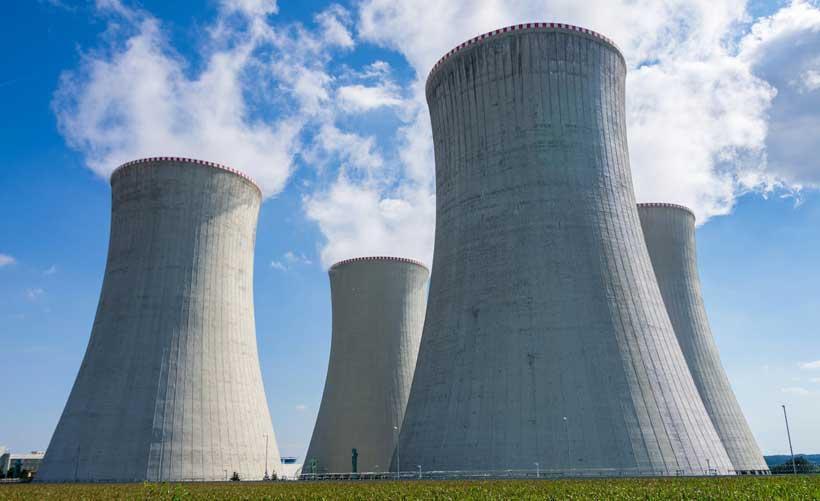Yannis Bassias
Africa-Press – Tanzania. Interest in nuclear energy is rising once again. As countries face the urgent need to support growing electricity demand, secure energy supplies, and cut carbon emissions, nuclear power is being re-evaluated as a key part of the energy mix. This renewed interest comes at a time of growing geopolitical tensions, volatile energy markets, and rapid technological change. While nuclear energy has long been controversial, recent advances in safety, design, and scalability are changing the conversation. Small Modular Reactors (SMRs), which are more affordable and quicker to deploy than traditional reactors, are at the center of this new wave of nuclear momentum. Governments and energy companies are now reconsidering how nuclear power can complement renewable energy sources and help build a safer, stable, and low-emissions energy future. This article explores the rise, fall, and resurgence of nuclear power and examines what the nuclear comeback means for Europe and Greece in particular.
A Look Back: The Rise and Fall of Nuclear Power
The trajectory of nuclear energy has been shaped by cycles of optimism and disillusionment. The commercial development of nuclear power began eagerly during the 1950s, with the United States, the United Kingdom, and France constructing the first generation of nuclear reactors. These reactors were promoted as a source of cheap, safe, and virtually limitless energy. However, from the outset, the nuclear industry faced significant setbacks. High capital costs, long construction times, and unforeseen technical problems led to delays and cost overruns. Moreover, public perception of nuclear power suffered irreparably in the wake of major nuclear accidents. The Three Mile Island partial meltdown in 1979 was a wake-up call for the United States. The 1986 Chernobyl disaster had devastating environmental and health consequences and shook public confidence in Europe and elsewhere. In 2011, the Fukushima Daiichi accident in Japan, caused by a tsunami, reignited global fears and led countries like Germany to accelerate their nuclear phase-out. These incidents cast long shadows over the industry, raising questions about the safety of nuclear technology and the adequacy of regulatory oversight. On top of these issues, there were unresolved questions surrounding radioactive waste management and the dual-use nature of nuclear technology, which posed proliferation risks. By mid-2025, only 416 nuclear reactors remained operational globally across 31 countries, supplying approximately 8–10% of the world’s electricity generation. The share of nuclear energy in the global mix has dramatically declined from a peak of 17.5% in the mid-2010s to just over 9% in 2022. While nuclear energy all but disappeared from the policy agenda in some states such as Germany, others, especially in Asia, continued to invest. China, South Korea, and India viewed nuclear power as essential to their long-term energy and economic development strategies.
Why Nuclear Is Back on the Table
Today, nuclear energy is experiencing a resurgence. This development, however, is not without historical precedent: in the early 1970s, the oil crisis compelled many industrialized nations to diversify their energy sources, resulting in substantial investments in nuclear power. The current nuclear resurgence is driven by three overlapping factors. First, the push to reduce greenhouse gas emissions has created a renewed focus on low-carbon energy sources. Nuclear power produces virtually no emissions during operation and is well-suited to provide constant, reliable electricity. While renewables like solar and wind are essential, they are variable and depend on weather conditions. Nuclear energy can provide stable baseload power, reducing reliance on fossil fuels during periods of low renewable output. Second, electricity demand is increasing rapidly, particularly in emerging markets and in digital ecosystems. Data centers, electric vehicles, artificial intelligence, and cryptocurrency mining all require vast amounts of electricity. By 2029, the number of connected devices worldwide is projected to reach 39 billion. This is putting pressure on national grids and creating demand for clean, round-the-clock energy sources. Third, energy security has become a top priority for many countries following the wars in Ukraine and the Middle East, rising energy prices, and tensions in global supply chains. Governments are increasingly interested in domestically produced energy that is secure from geopolitical disruptions. Nuclear power fits perfectly this bill.
Nuclear power plants are renowned for their reliability and boasting capacity factors exceeding 90%. This high level of consistency makes them an attractive option for data centers that require stable and constant power supplies. Electricity consumption by data centers, the penetration of AI, and the cryptocurrency sector will all together double by 2026. Massive investments in energy-intensive data centers and artificial intelligence (AI) have increased energy demand. According to the United Nations Conference on Trade and Development (UNCTAD), global energy consumption associated with Bitcoin mining increased 34-fold between 2015 and 2023, reaching 121 terawatt hours (TWh) per year, equivalent to twice the electricity consumption of a country like Greece or Belgium. At the COP28 climate conference, 22 countries, including the U.S., France, and the U.K., pledged to triple their nuclear capacity by 2050. According to the International Energy Agency (IEA), meeting net-zero goals could require up to 812 gigawatts of nuclear power globally and over $4 trillion in investment.
Geopolitical Competition and Strategic Partnerships
Nuclear power is also becoming a key part of global geopolitical competition. Countries are not only building nuclear capacity for domestic use, but they are also exporting their technology, building alliances, and competing for influence in the energy space. China has become a leader in building and financing nuclear plants abroad. As part of its Belt and Road Initiative, China offers nuclear technology, financing, and training to emerging economies in the Global South. India is building major nuclear projects in partnership with French and American companies. The Jaitapur project, for example, will be the largest nuclear power plant in India once completed and is backed by French state-owned company EDF. Russia remains by far the global dominant player through its state-owned nuclear agency, Rosatom, which offers “turnkey” nuclear solutions. In 2024, Rosatom was involved in 22 out of 25 new nuclear reactors being built abroad. These offerings include financing, construction, fuel supply, and waste management. This integrated approach gives Russia a strategic advantage in securing long-term strategic partnerships and building energy dependencies. In contrast, Western countries have not yet coordinated to offer comparable solutions.
Meanwhile, Germany phased out its last nuclear plants in 2023, marking a complete withdrawal from nuclear power. China, by contrast, has increased its output from 55 terawatt-hours (TWh) in 2006 to 435 TWh in 2023. Russia has also increased its nuclear output by 39% in that period. This contrast highlights different national strategies and points to a growing need for a common European approach to nuclear energy.
The Promise of Small Modular Reactors (SMRs)
One of the most promising developments in the nuclear field is the emergence of Small Modular Reactors (SMRs) and Micro-Modular Reactors (MMRs). These new-generation reactors are designed to be smaller, safer, and faster to build. SMRs typically generate between 10 and 300 megawatts of electricity—enough to power a small city. Their compact design allows them to be built at factories and shipped to location, dramatically reducing construction costs and delays. They feature advanced safety systems, such as passive cooling, which do not require operator intervention in case of malfunction. Beyond electricity generation, SMRs have many potential uses. They can power remote areas, support desalination, produce clean hydrogen, or provide energy for data centers and heavy industrial processes. The maritime industry is also exploring SMRs as propulsion systems for long-haul shipping. Nuclear-powered ships could operate with greater autonomy, lower fuel costs, and zero emissions. However, the market for SMRs is still fragmented. More than 80 different designs are in development, most of which are still awaiting regulatory approval. Without standardization, it will be difficult to scale up manufacturing and drive down costs. Countries like Russia and China, with centralized energy planning and state-supported industries, are already moving toward mass production. To stay competitive, Western countries will need to streamline their certification processes, invest in research, align around a few core designs, and build at scale.
The Incomplete Nuclear Renaissance: Challenges to Address
The nuclear comeback faces important structural and policy challenges. First, the issue of radioactive waste disposal remains unresolved in most jurisdictions. While Finland’s deep geological repository at Onkalo offers a promising model, replicating such initiatives elsewhere requires both political consensus and technological innovation. Second, proliferation concerns remain salient. The spread of SMRs must be accompanied by stringent safeguards, including reducing plutonium production and minimizing the risk of diversion through secure fuel cycles. Third, Western nuclear industries are hampered by regulatory complexity and institutional inertia. The comparative timelines of identical reactor types in the United States (Vogtle) and China (Sanmen) highlight the cost of excessive oversight. Fourth, supply chain resilience is of paramount importance. Without vertically integrated capabilities, Western firms will struggle to compete with the one-stop-shop solutions offered by their Russian and Chinese counterparts. To that end, Europe and North America must pursue coordinated strategies encompassing project financing, public-private partnerships, and international regulatory alignment. Last, even with improved technology, public trust remains a barrier. Transparent communication, community engagement, and education will be essential to winning public support for new nuclear projects.
moderndiplomacy
For More News And Analysis About Tanzania Follow Africa-Press







